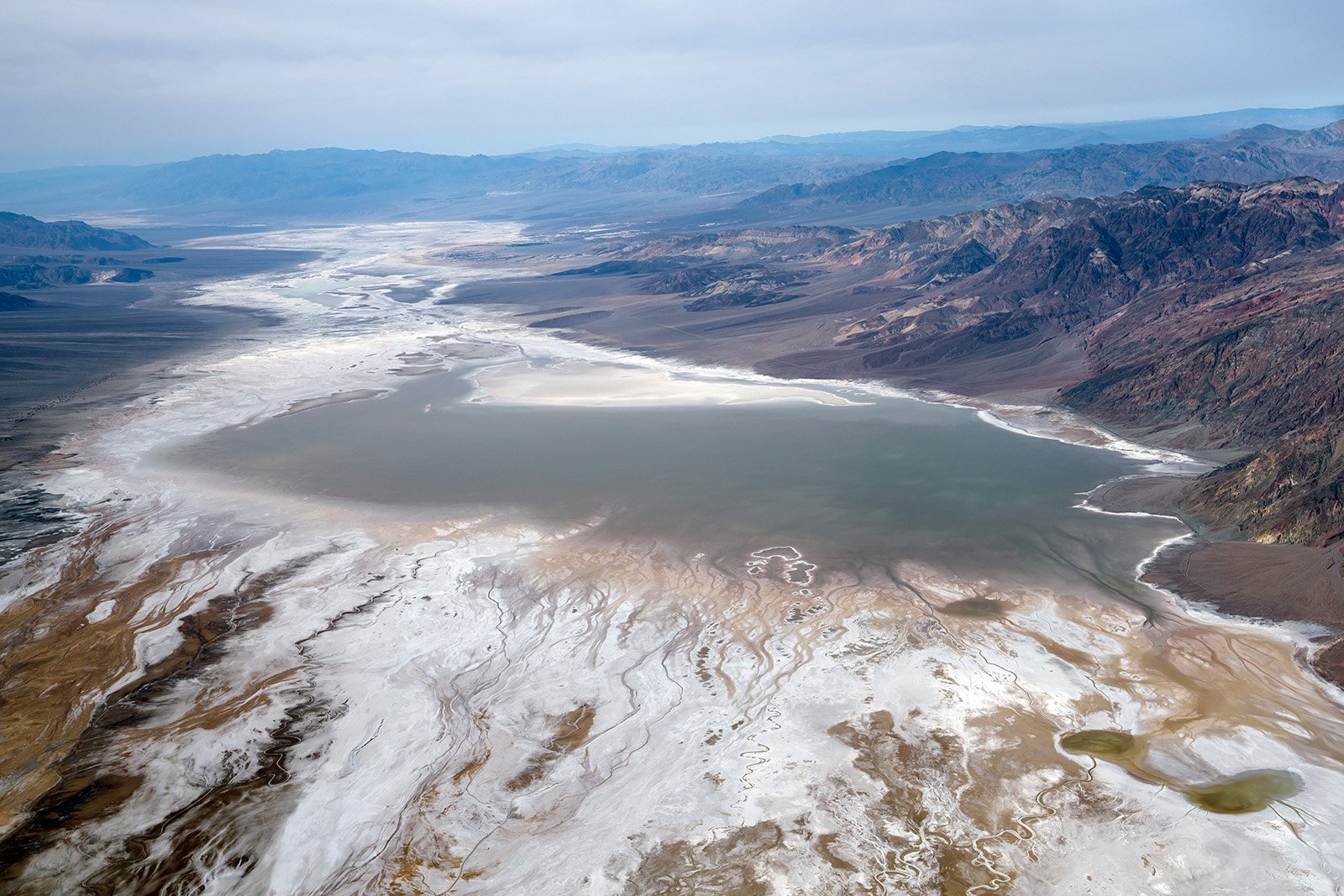
Imagine finding a lake in the middle of the sprawling desert in Death Valley. This rare occurrence is not just a figment of the imagination; it’s the real, though temporary, Lake Manly. Formed only when unusual weather patterns bring significant rain, this Death Valley lake captivates those lucky enough to witness its brief existence.
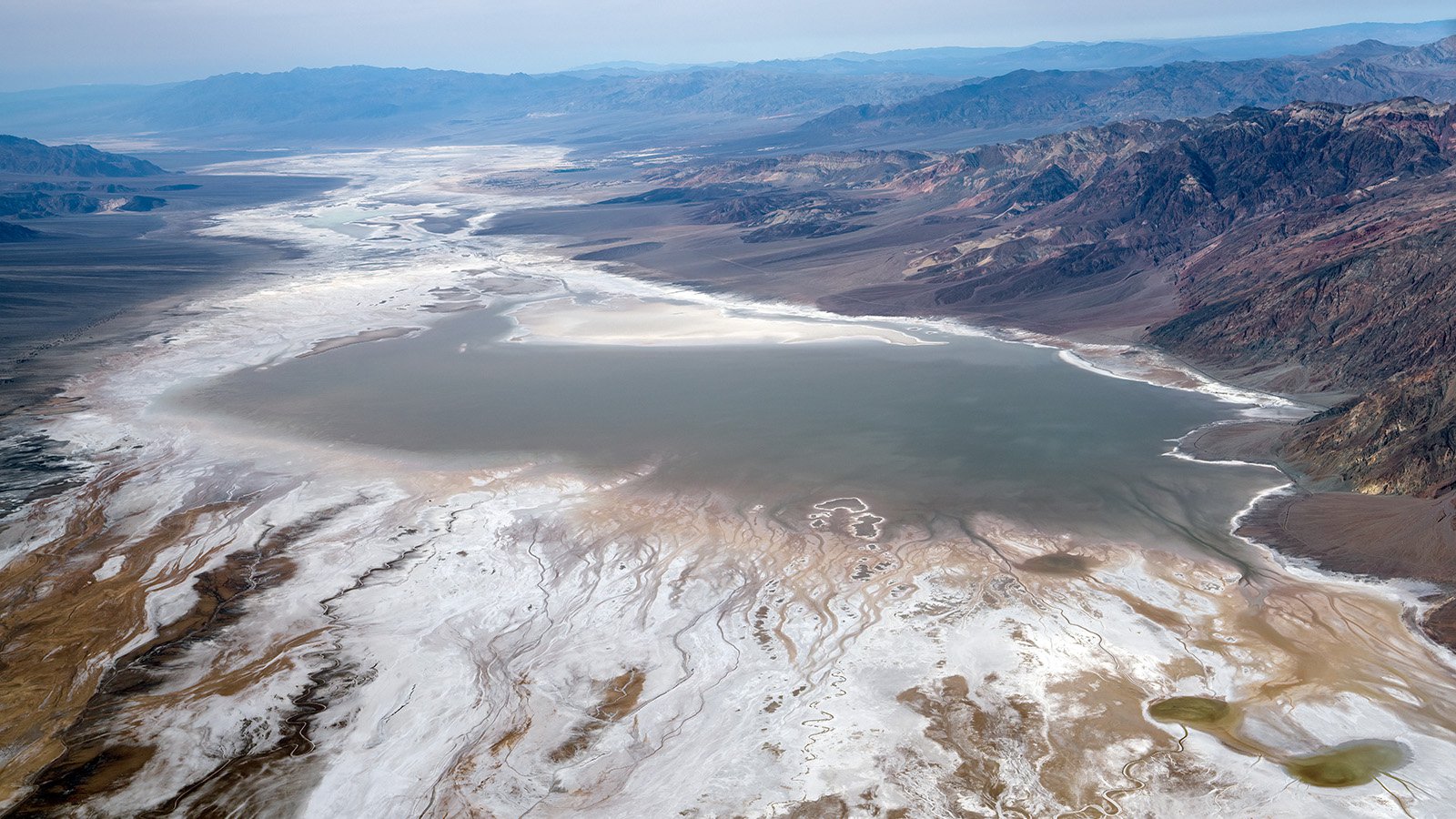
Aerial view of Lake Manly's gradual retreat, leaving behind a captivating network of irregular geometric shapes in the Badwater Basin salt flats, with the majestic Panamint and Black Mountains adding to the breathtaking spectacle of this geological wonder in Death Valley, California.
Exploring the Phenomenon of Lake Manly's Return
The resurrection of Lake Manly, a lake in Death Valley, beautifully illustrates the unpredictable dynamism and power of nature. The re-emergence of this vast ancient lake, nestled within the Death Valley National Park, has been attributed to a series of climatic events, including record torrential rains and specific weather conditions. With the downpour, the valley floor metamorphosed from a dry, barren desert to a vibrant, shallow lake, bringing an ephemeral splash of color to the otherwise monochrome landscape.
Creating a temporary oasis, Lake Manly draws in curious visitors eager to witness this rare spectacle. The lake’s shallow waters offer an excellent opportunity for kayaking and swimming, a stark contrast to the usually arid Death Valley. However, this is a fleeting spectacle, as the lake, as of this writing, has disappeared with the arid conditions return.
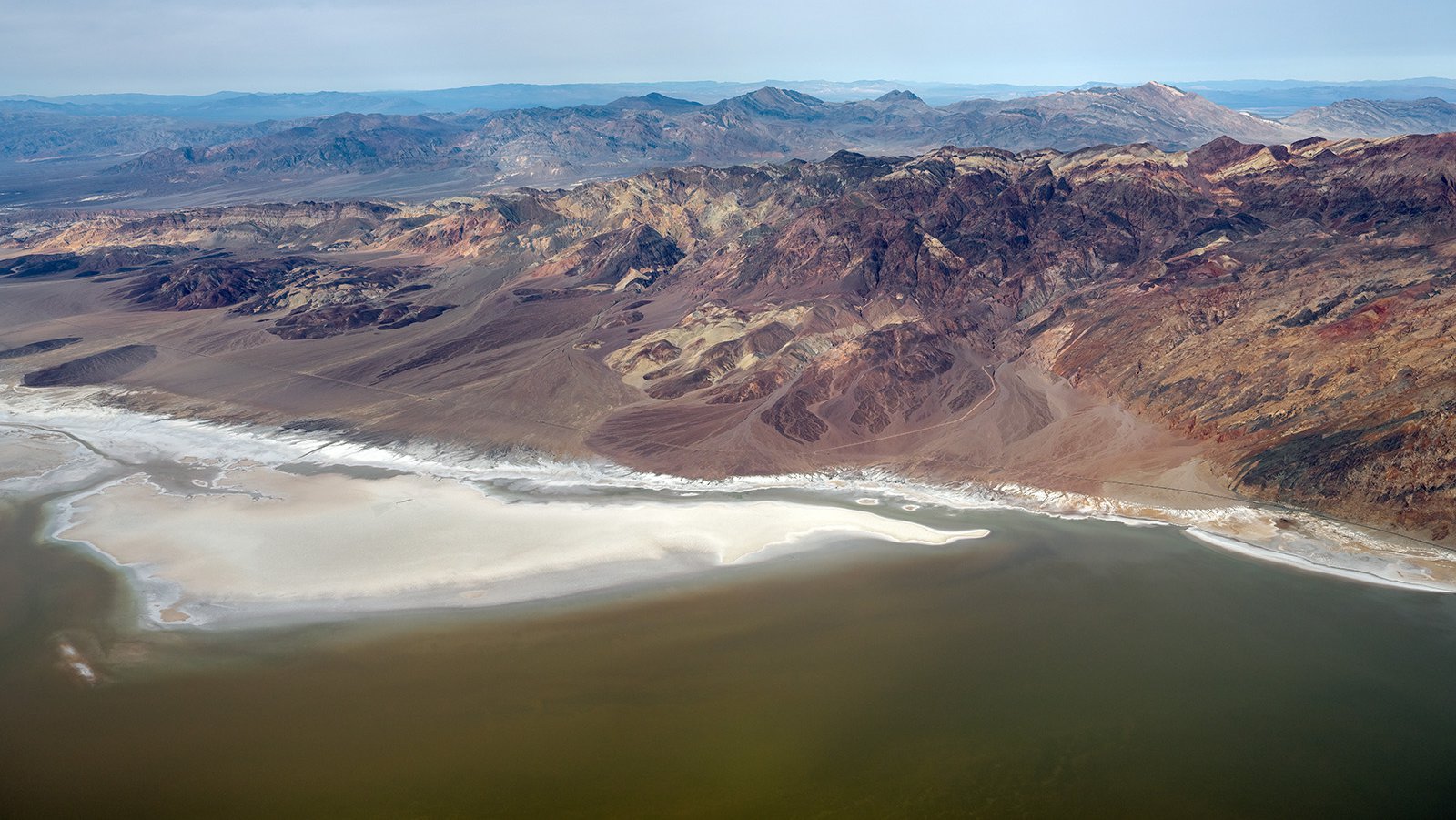
Aerial view of the receding Lake Manly in Death Valley, California, reveals a large white island amidst the Badwater Basin salt flats, surrounded by the majestic Panamint and Black Mountains, underscoring the unique geological features and transient nature of this ancient lake.
The Resurgence of Water
The creation of this temporary lake in the Badwater Basin owes much to record-breaking ‘atmospheric rivers’ and an unusual accumulation of nearly five inches of rainfall in the past six months. This transformation from a parched valley floor to a shimmering saltwater lake, six miles long and three miles wide, is a sight to behold.
Winds and mountain-induced winter flash floods actively modulate the lake’s characteristics, pushing the water two miles north and altering its overall depth and spread. This constant fluctuation adds an element of mystery and unpredictability to the spectacle, enhancing its allure for visitors and researchers alike.
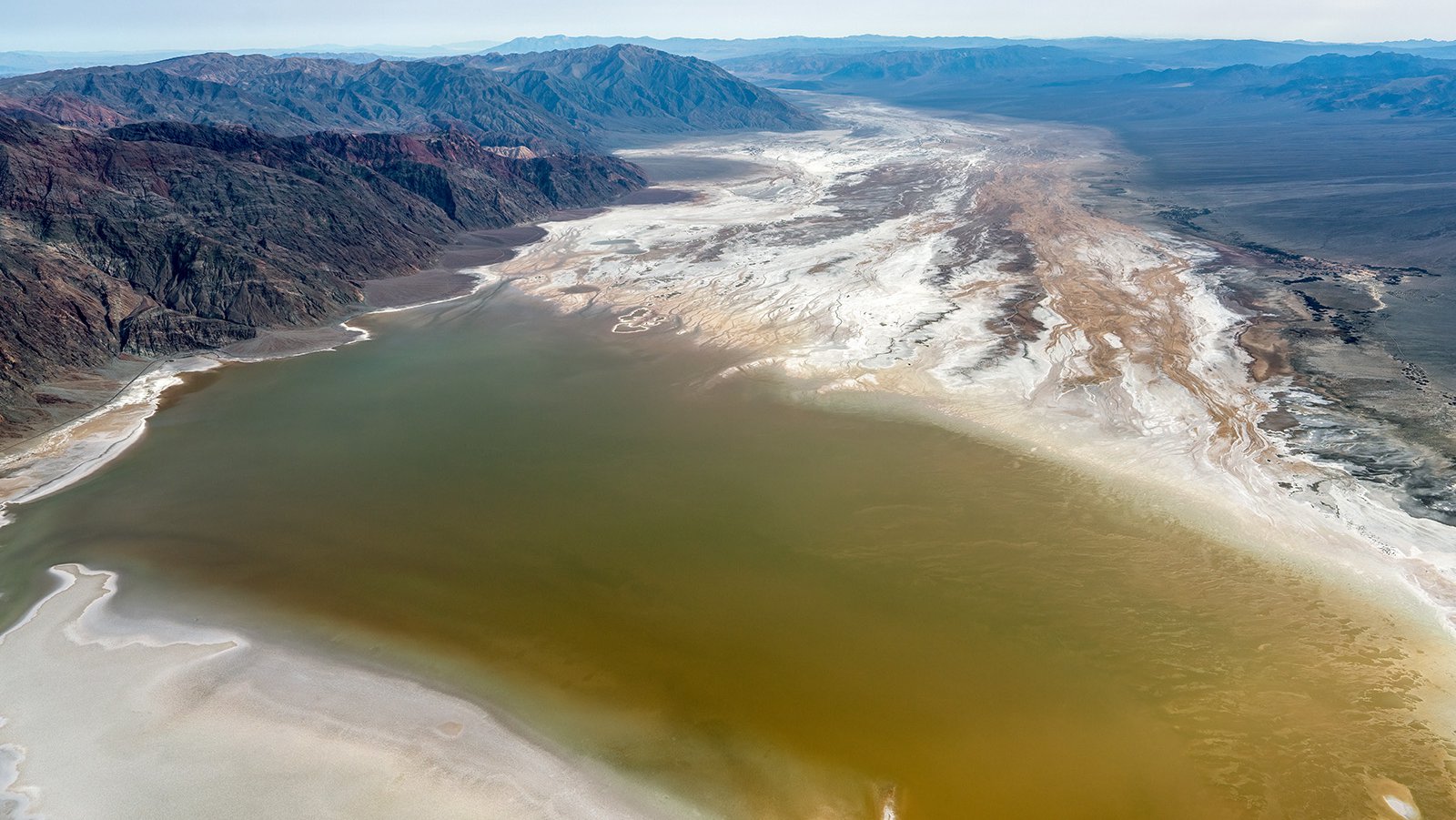
The temporarily reappeared Lake Manly in Death Valley, California showcases a vast expanse of yellowish water filling Badwater Basin, surrounded by the striking peaks of Panamint and Black Mountains, with the unique geological features of the salt flats visible in the background.
A Temporary Mirage
Despite its splendor, Lake Manly’s resurgence is ephemeral, serving as a reminder of beauty’s fleeting nature. A significant windstorm recently caused increased evaporation rates, leading to changes in water levels and highlighting the lake’s fragile stability. While the lake still remained deep enough for activities such as kayaking and swimming, this only lasted for a few more weeks.
With the onset of warmer weather, water levels dropped, resulting in the lake’s disappearance until the next substantial rainfall. This ephemeral existence of Lake Manly adds to its charm, making each visit a unique experience and a treasured memory for its visitors.
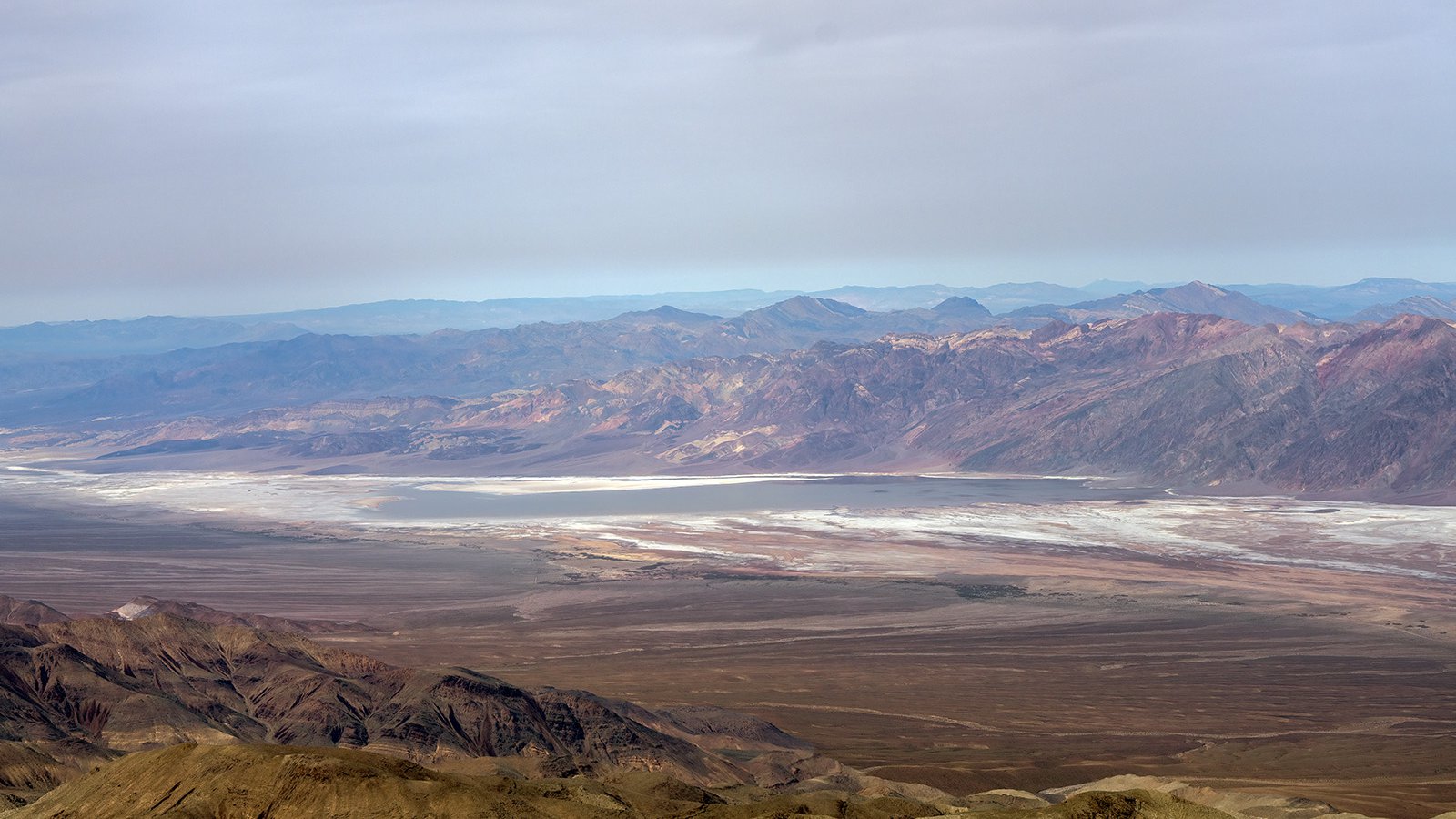
The reemergence of Lake Manly in Death Valley, California, which has been dormant for thousands of years and has only appeared due to exceptional rainfall and climatic conditions, surrounded by the stunning panorama of the Panamint and Black Mountains.
The Geological Story Behind Death Valley's Water
The story of Lake Manly is deeply intertwined with the geological history of Death Valley, revealing an intriguing narrative of the region’s past. Evidence suggests that Lake Manly existed during two notable periods, the longest stretching from about 186,000 to 120,000 years ago, and a shorter period from 35,000 to 10,000 years ago. These periods of existence were influenced by climate transitions from megadrought conditions to flooding rains, echoing Lake Manly’s prehistoric significance.
Death Valley’s unique geographical features, including its position as one of the lowest points on Earth, have been shaped by the rising of surrounding mountains and the sinking of the valley itself. This region, which started forming approximately 14 million years ago, is recognized as one of the most tectonically active areas in the United States, with vertical faulting from tectonic processes playing a role in altering Lake Manly’s historical shorelines.
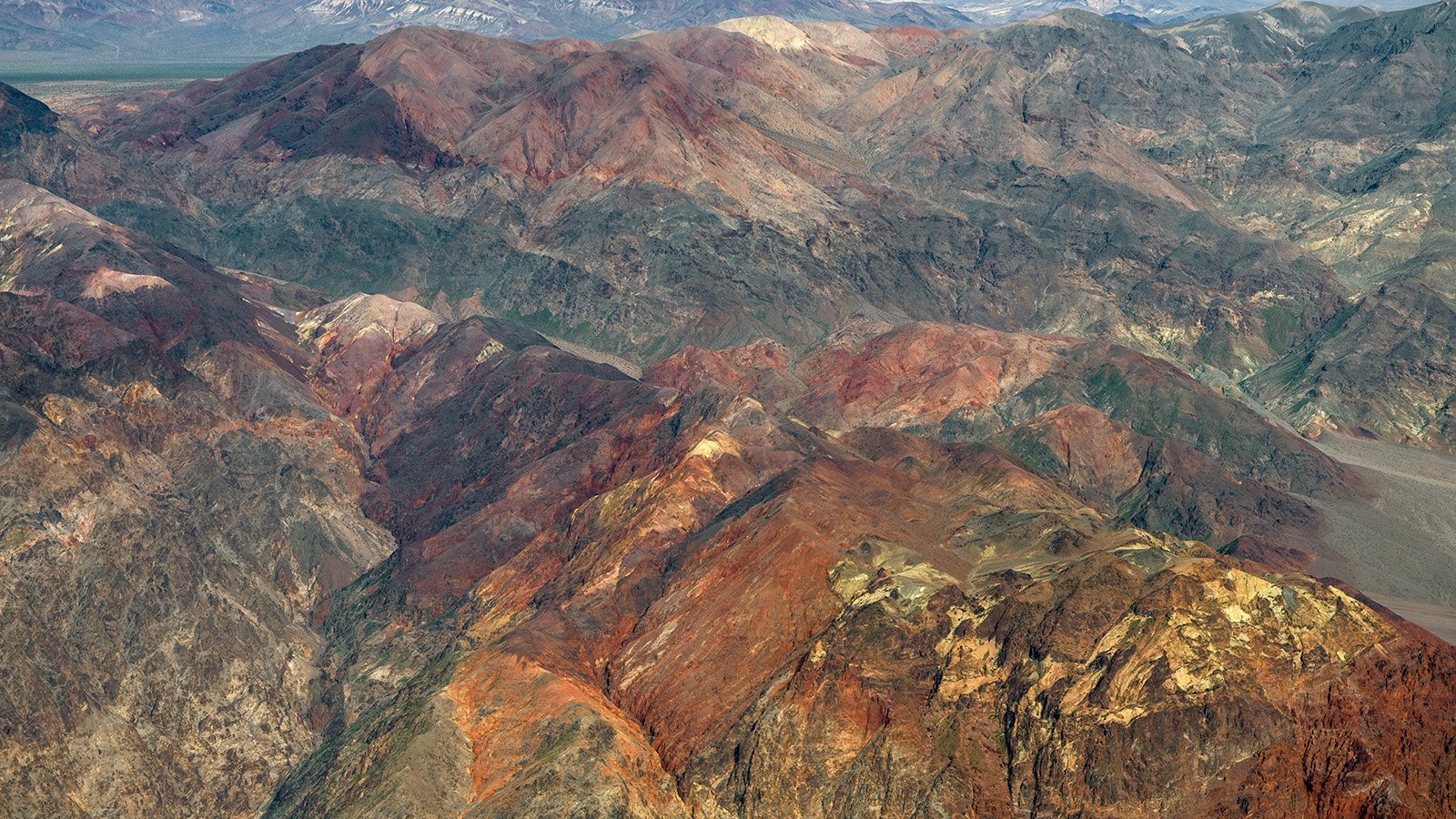
The surrounding Panamint and Black Mountains are painted in bright reds and oranges, providing a mesmerizing landscape and geological intrigue.
The Role of Surrounding Mountains
The surrounding mountain ranges, notably the Panamint and Black Mountains, have played a significant part in shaping the valley’s geological evolution. These towering ranges have influenced the creation and depletion of ancient bodies of water like Lake Manly, acting as natural barriers that have shaped the valley’s topography.
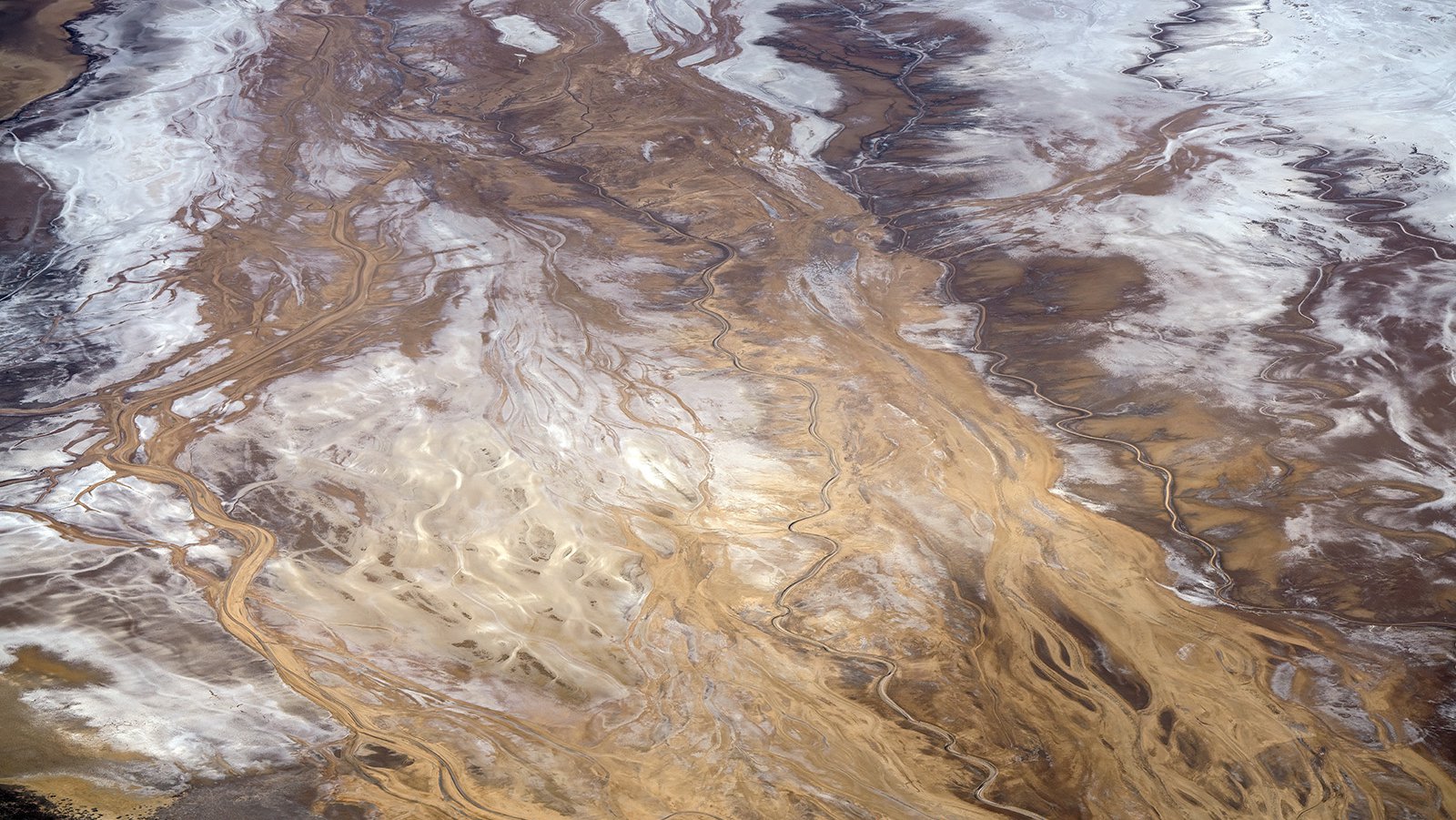
The intricate network of dry river beds that trace the Lake Manly's historic retreat, leave behind the otherworldly salt flats of Badwater Basin in Death Valley, California.
The rising of these mountains and the sinking of the valley have resulted in a rain shadow effect, which has significantly influenced the drying up of Lake Manly. This interplay between mountainous barriers and the valley floor has resulted in the unique geological features we can witness today in Death Valley.
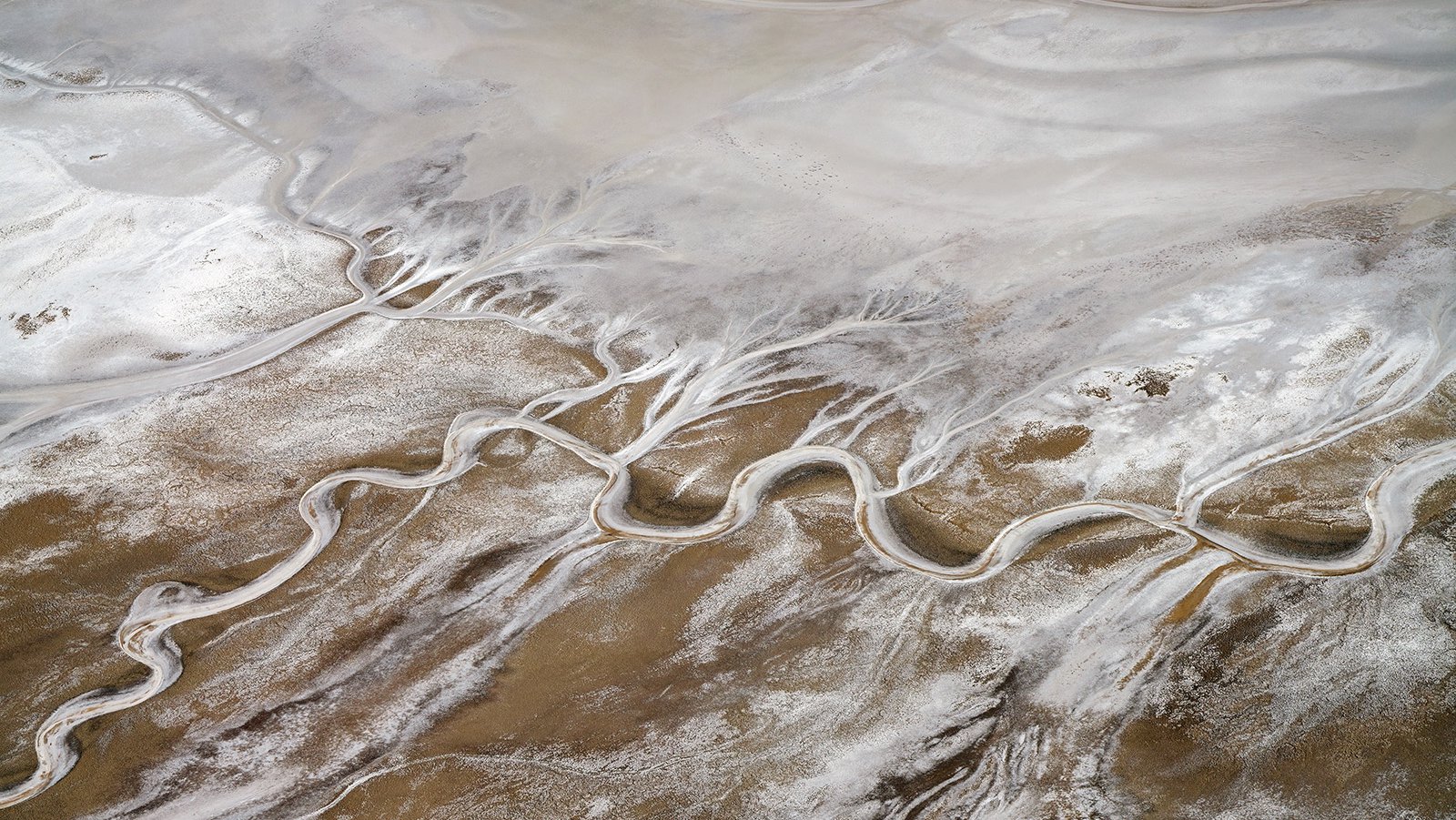
Lake Manly, once a vast body of water that has now temporarily reappeared in Death Valley, is surrounded by barren brown salt flats, cut through by white dry rivers of salt, showing the area's unique geological features and fascinating history.
The Salt Flats and Their Secrets
The salt flats of Death Valley, serve as a stark reminder of Lake Manly’s past existence. Once the base of an extensive lake, the area of Badwater Basin has now transitioned into an expanse of vast salt flats, a testament to the lake’s former glory.
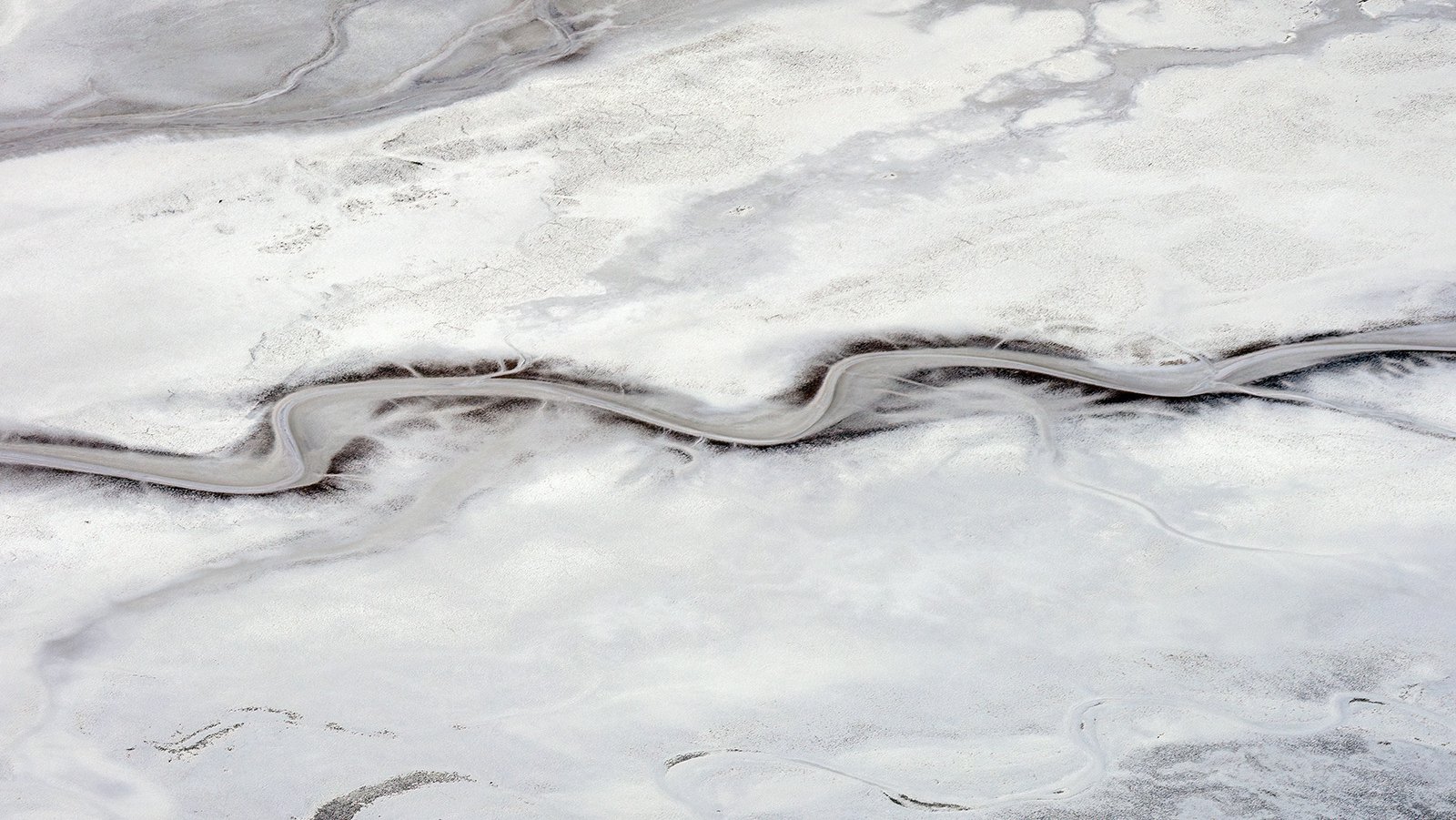
A mesmerizing landscape consisting of the vast salt flats in the Badwater Basin, with an abundance of salt giving the image an impressive black and white appearance even though it is captured in color.
Exploratory drilling in the salt pan, the lakebed of the old Lake Manly, revealed salt deposits reaching depths of up to 4000 feet, hinting at the presence of the ancient lake. The floor of Death Valley showcases unique features, including brilliant white salt patterns, irregular geometric shapes, and mounds combining sand and salt, all of which contribute to the valley’s mesmerizing landscape and its geological intrigue. Some of these salt mounds can even reach a foot deep, adding to the fascinating terrain.
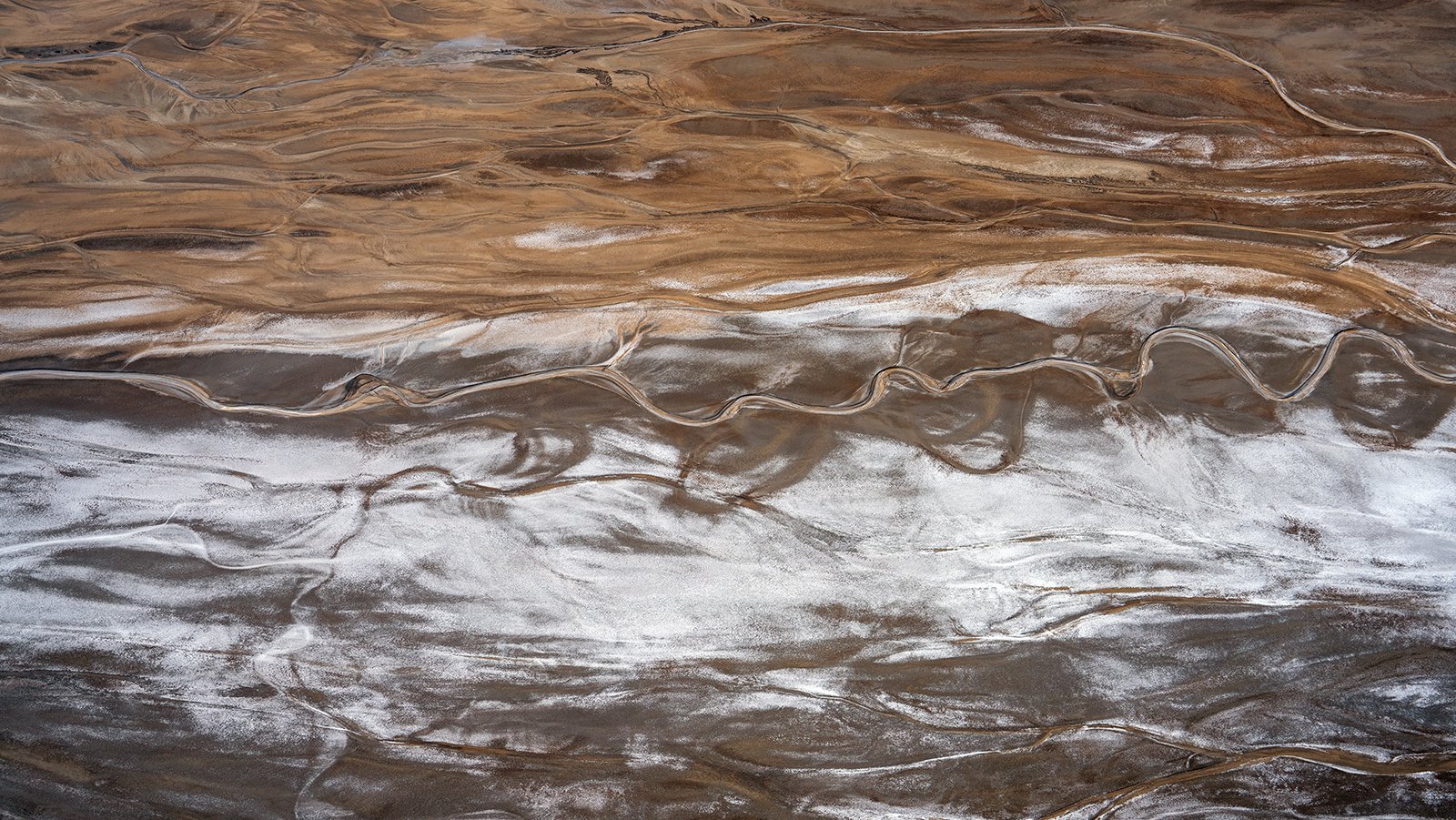
The intricate network of winding patterns etched into the brown sand and white salt flats of Badwater Basin by the receding Lake Manly, showcasing the striking contrast between the barren, desolate landscape and the once magnificent body of water that once thrived in Death Valley.
The Ecosystem of an Ancient Lake
The unexpected reappearance of Lake Manly, an extinct lake, has reignited interest in the previously thriving ecosystems of this ancient landscape, where lakes that have disappeared once, such as Lake Manly, could possibly return to their former glory.
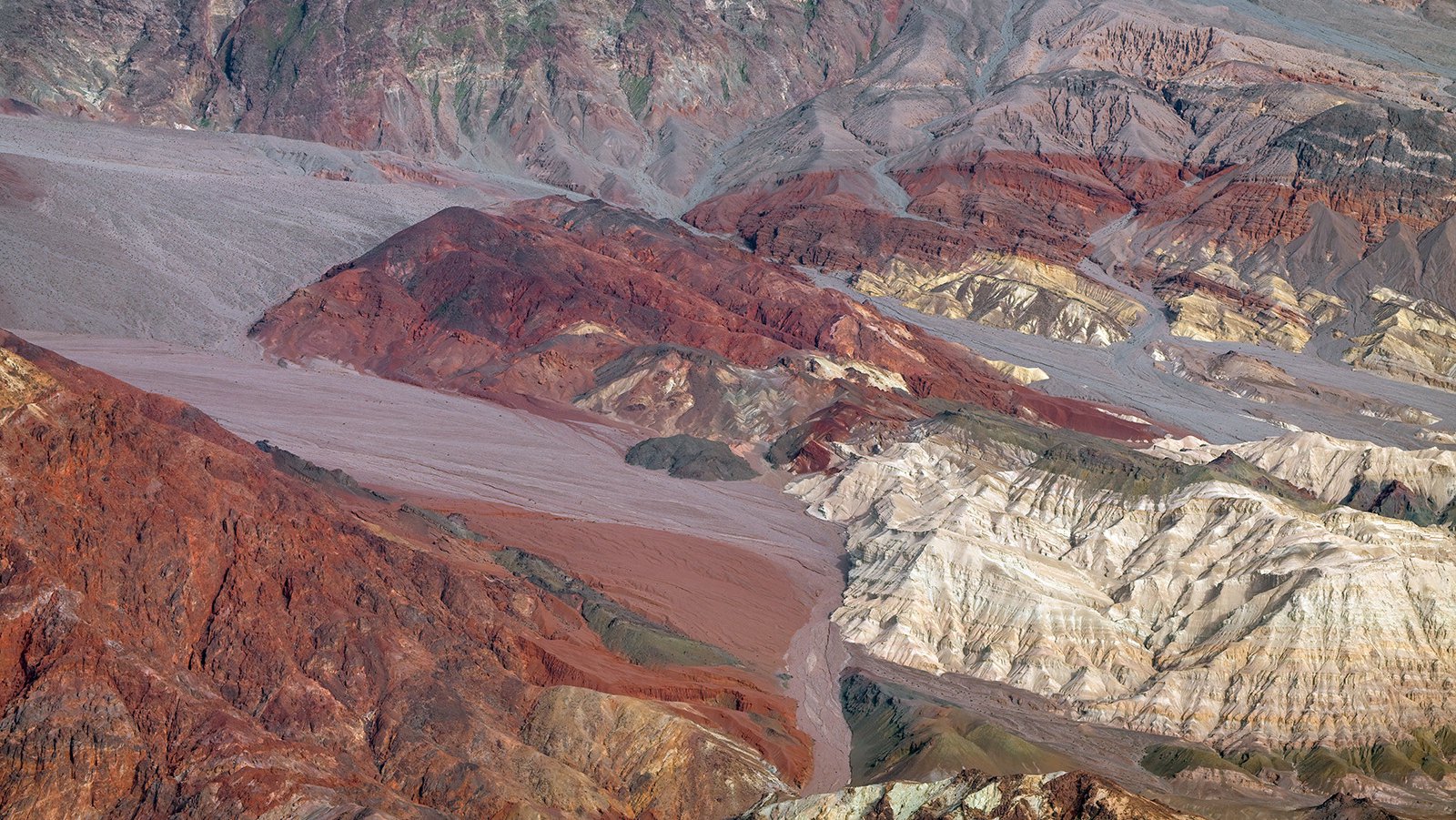
The striking contrast between the dark red hues and the bright yellow stripes of the Panamint and Black Mountains, showcase the rugged beauty of the surrounding terrain above the recently reappeared Lake Manly in Death Valley, California.
Life in Extreme Conditions
The arid environment of Death Valley has shaped the survival strategies of its inhabitants, leading to the evolution of unique adaptations. Some examples include: the desert bighorn sheep, which can go several days without water and extract necessary moisture from seed-based diets; kangaroo rats, which have the ability to cope with extreme heat and survive on very little water; and bats, which have developed adaptations to survive in the desert, such as the ability to fly long distances in search of food and water.
The Greater Roadrunner, indigenous to the region, can tolerate high body temperatures, enabling it to survive the extreme heat of Death Valley. The Mojave Desert Tortoise is another remarkable species that spends up to 95% of its lifetime underground, primarily consuming wildflowers, grasses, and cacti, demonstrating the varied survival strategies deployed by species to endure the harsh conditions of the desert.
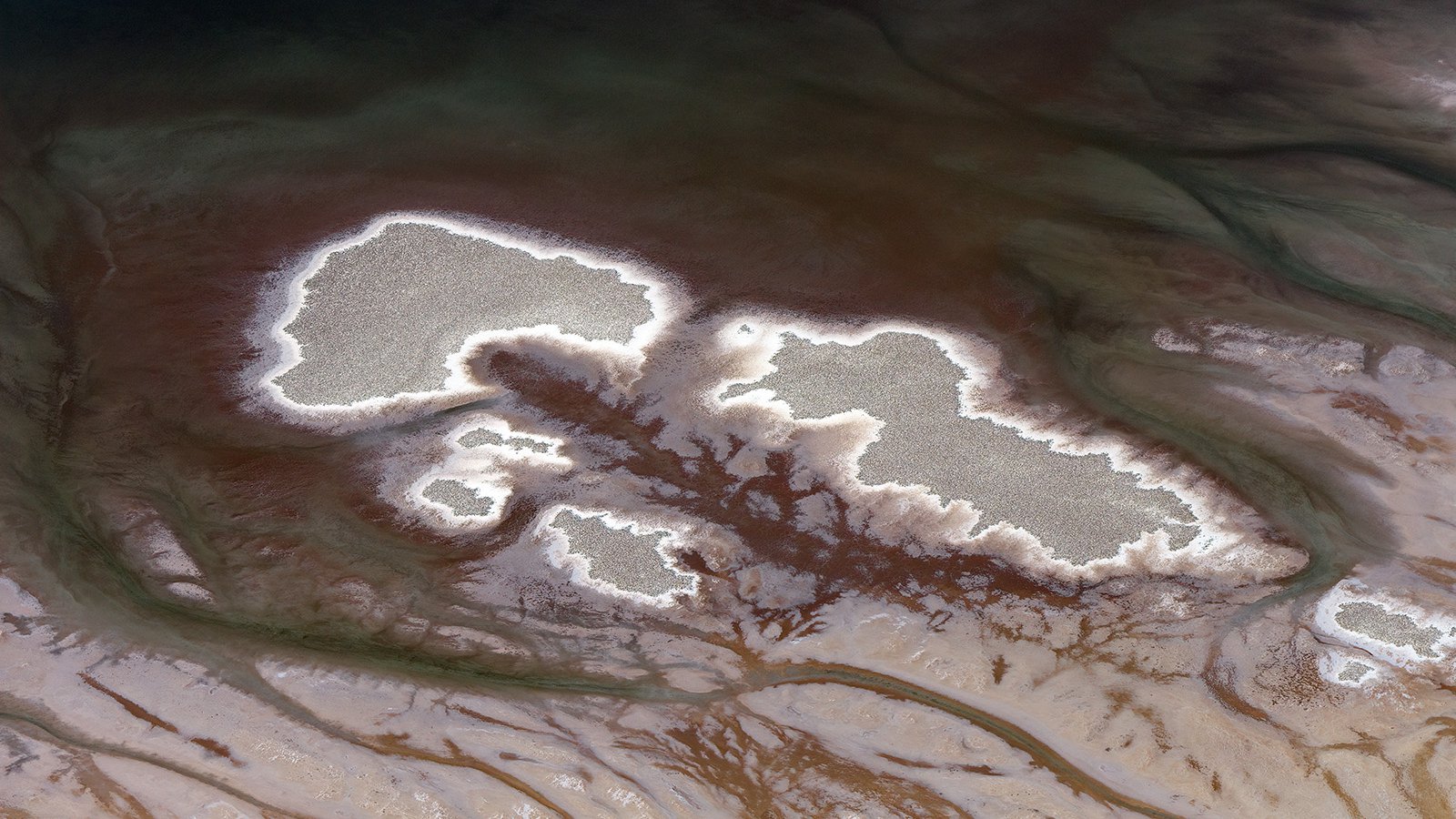
The unique geological features of Death Valley's Badwater Basin are highlighted as the temporary reappearance of Lake Manly fades, leaving behind a mesmerizing landscape of brilliant white salt patterns, irregular geometric shapes, and mounds of sand and salt.
The Legacy of Lake Manly
The legacy of Lake Manly is etched into the geological features of Death Valley. Evidence of the lake’s existence include: wavecut terraces, pebbles, tufa, clay and salt layers; calcium carbonate deposits likely formed by algae; and remnants of aquatic species like the Devils Hole Pupfish. These features serve as a reminder of the lake’s past presence in the area.
The transformation from the extensive Lake Manly to the arid desert valley seen today is a testament to the dramatic shifts in Death Valley’s climate over geologic timescales. This transformation stands as a stark reminder of the transitory nature of landscapes and the indelible marks they leave behind in their evolution.

The mesmerizing irregular brown shapes in the Badwater Basin, formed by the receding Lake Manly, resembling tongues of fire, while the Panamint and Black Mountains majestically flank the basin.
The Future of Lake Manly
Uncertainty surrounds the future of Lake Manly, with its potential re-emergence hinging on climate predictions and conservation efforts. The future climate of Death Valley, particularly how precipitation patterns will change with rising temperatures, can significantly influence whether Lake Manly will reappear again in the future. Factors such as El Nino could drive heavy rainfall leading to the return of Lake Manly, and climate change could increase the frequency of such weather events.
Even as the future of Lake Manly continues to be a topic of speculation and scientific study, its re-emergence underscores the transient nature of landscapes. This fleeting spectacle of nature not only provides a unique opportunity for exploration and adventure but also underscores the importance of conservation and respect for our natural environment.
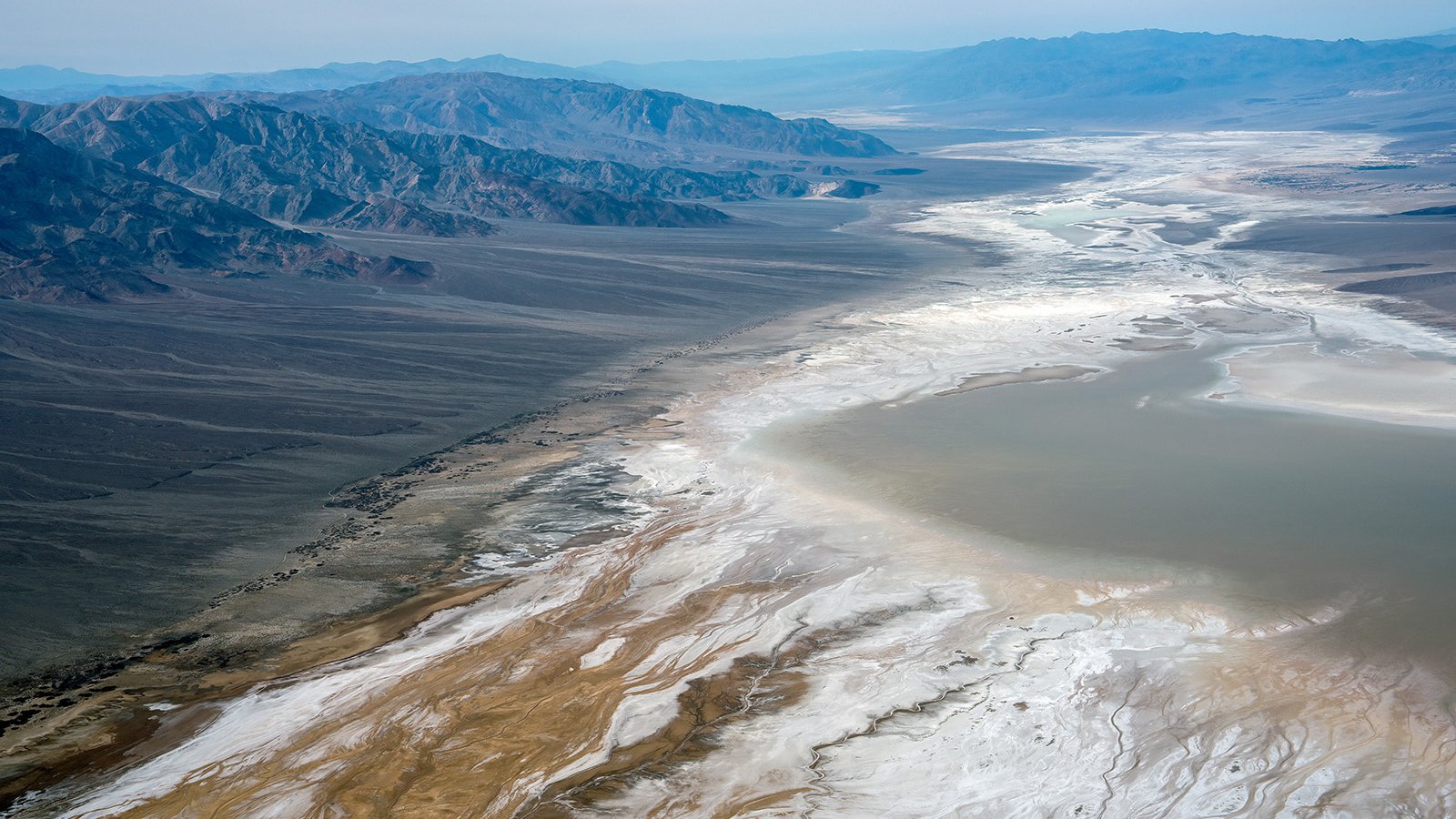
Lake Manly in Death Valley, California, a slowly receding ancient lake, leaves behind an intricate network of irregular geometric shapes amidst the vast salt flats of Badwater Basin, with the majestic Panamint and Black Mountains towering on either side, offering a glimpse into the geological wonders of this unique landscape.
Climate Predictions and Water Levels
Climate models predict a continued drying trend for the region of Death Valley, suggesting less frequent rain events in the future. However, there is a predicted increase in variability of precipitation, which could lead to sporadic but intense rainfall, lending an increased unpredictability to the future reformation of Lake Manly.
Projections also indicate a warming trend over the next decade, which may exacerbate evaporation rates. This, coupled with the predicted increase in unexpected rainfall events, suggests that the likelihood of Lake Manly’s reappearance increases despite the drying trend. And in scenarios of exceptionally high rainfall, the temporary lake could span across significant portions of the valley floor, returning to the historical extents of Lake Manly.

Lake Manly's shore bustling with visitors, as evidenced by the full parking lot and cars parked along the road, and people enjoying a swim in the once-disappeared but now-revived lake.
Conservation Efforts by the National Park Service
The National Park Service has taken significant strides in integrating climate-friendly practices into the management of Death Valley National Park. This includes developing Action Plans and constructing a LEED certified visitor center, highlighting their commitment to sustainable practices. To minimize human impact during the rare event of Lake Manly’s reappearance, the National Park Service encourages visitors to stay on already-compacted surfaces, striking a balance between visitor enjoyment and ecosystem preservation.
The National Park Service has also recognized the historical undervaluation of Death Valley’s ecosystem and is actively working to preserve its unique attributes through restoration projects, including those at Point of Rocks Spring. The establishment of protected areas such as the Ash Meadows National Wildlife Refuge furthers conservation efforts, ensuring that the unique attributes of the Death Valley ecosystem are preserved for future generations to appreciate and learn from.
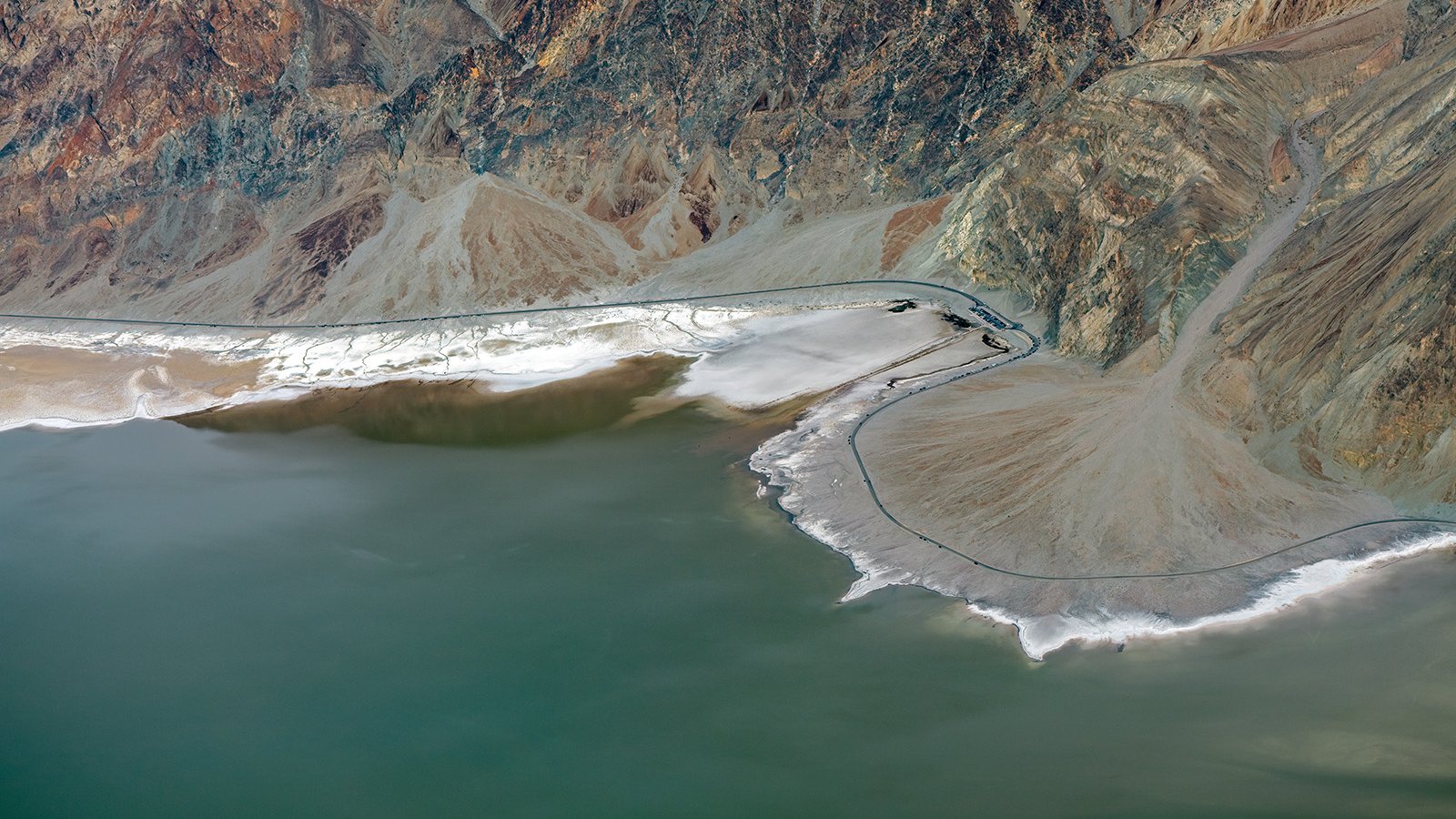
Aerial view of Lake Manly in Death Valley, California shows an unusual sight of the reappeared lake with a full parking lot and cars parked along the road, while visitors enjoy a swim in the clear blue water surrounded by the stunning backdrop of Panamint and Black Mountains.
The ephemeral Lake Manly stands as a testament to nature’s dynamism and the transient beauty of our planet’s landscapes. The historical journey of this ancient lake, its rich ecosystem, and its uncertain future serve as poignant reminders of the critical balance between enjoyment and preservation of our natural resources. As we marvel at the fleeting splendor of Lake Manly, let us also acknowledge our role in safeguarding these precious natural wonders for the generations to come.
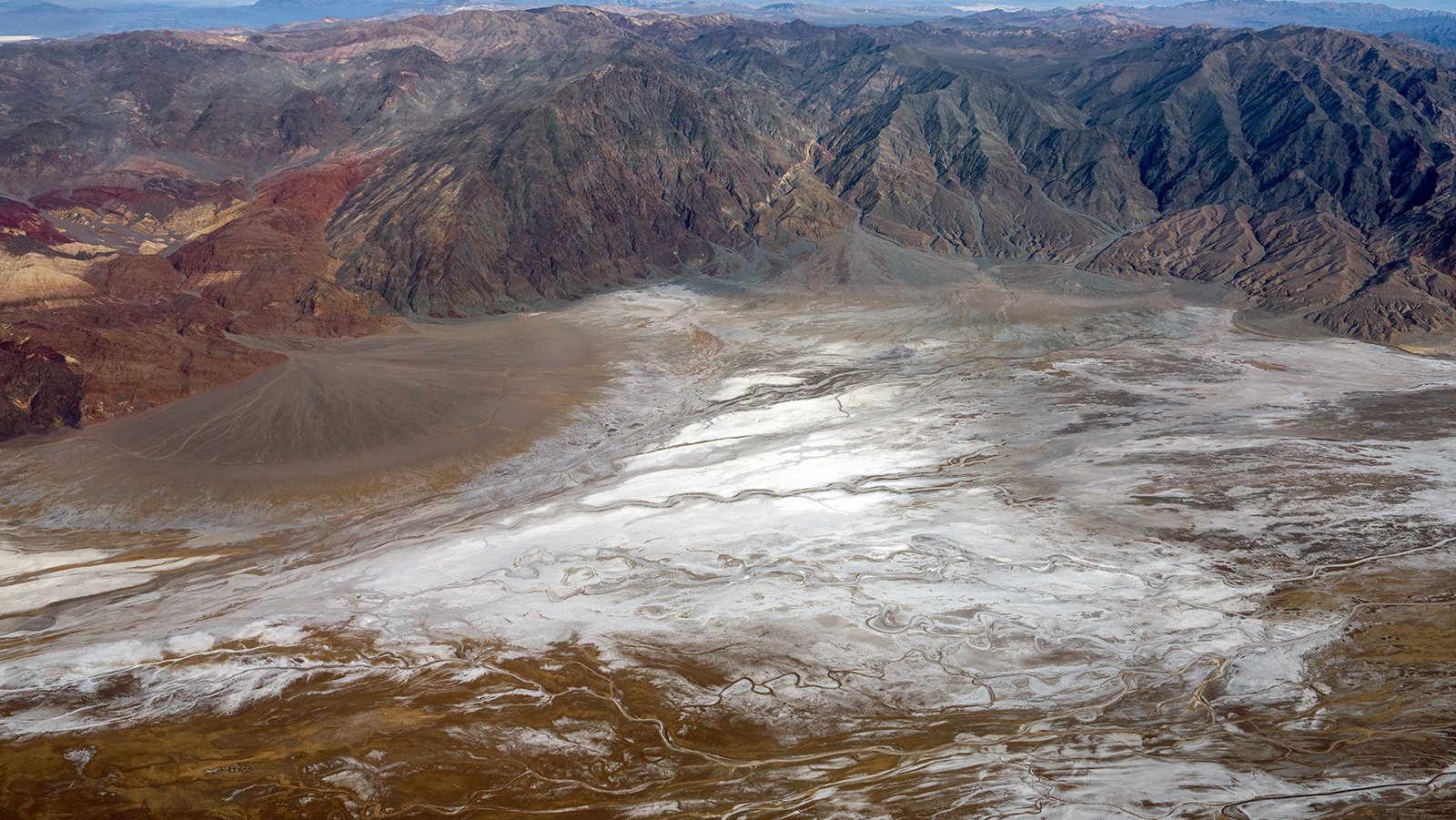
The strikingly intricate and mesmerizing patterns etched into the Badwater Basin salt flats by the receding Lake Manly, contrasting white and brown curves that wind through the stark brown and white landscape, all set against the breathtaking backdrop of the towering Panamint and Black Mountains.